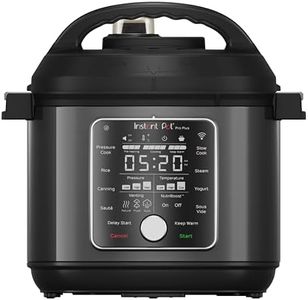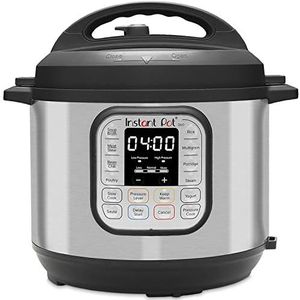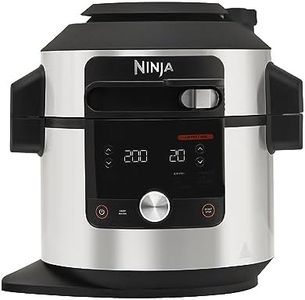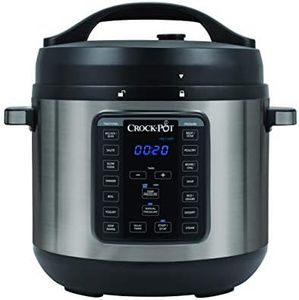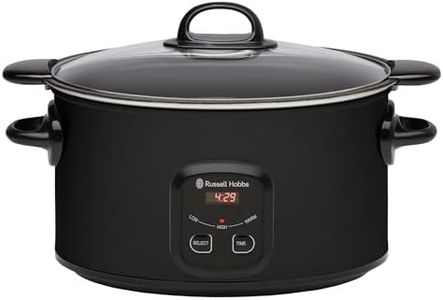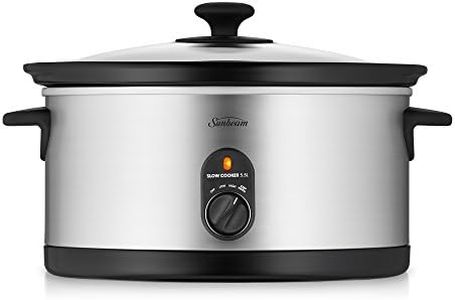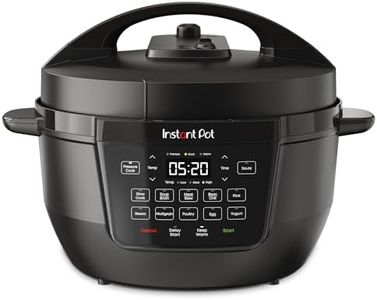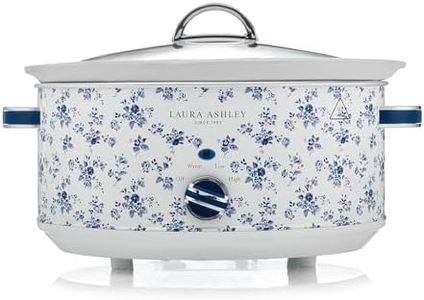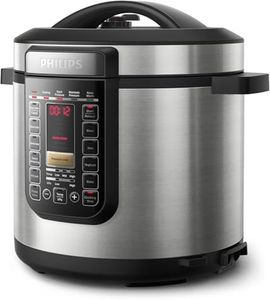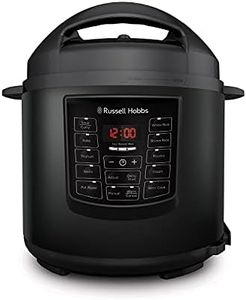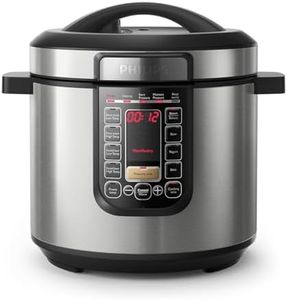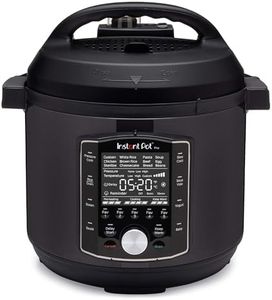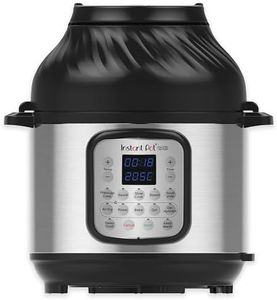We Use CookiesWe use cookies to enhance the security, performance,
functionality and for analytical and promotional activities. By continuing to browse this site you
are agreeing to our privacy policy
10 Best Large Capacity Slow Cooker
From leading brands and best sellers available on the web.Buying Guide for the Best Large Capacity Slow Cooker
Selecting the right large-capacity slow cooker can make a big difference in your kitchen, especially if you cook for a family, meal prep for the week, or entertain guests regularly. The key to finding the best model for you is to consider how you plan to use it—whether you want to make large stews, cook whole chickens, or prepare bulk batches for future meals. Understanding the main features and how they relate to your lifestyle will help ensure you get the most useful slow cooker for your needs.CapacityCapacity refers to how much food the slow cooker can hold, typically measured in quarts or liters. This is crucial because it determines how much you can cook at one time. Standard large-capacity slow cookers range from 6 to 10 quarts. A 6-7 quart model is great for families of four to six, while 8 quarts and above are perfect for larger families or those who like to batch cook for leftovers. If you mostly cook for one or two, a smaller size may actually be better to avoid wasting food. Consider how many servings you usually need and choose a size that matches your meal planning habits.
ShapeSlow cookers typically come in round or oval shapes. The shape affects what kind of food fits comfortably inside. Oval shapes are better for cooking large cuts of meat like roasts or whole chickens, while round models work well for soups and stews. If you often cook larger or oddly-shaped items, opt for an oval design. For more general use, either shape will work, but think about what meals you make most often when deciding.
Programmable vs Manual ControlsControls determine how you set cooking times and temperatures. Manual slow cookers have basic settings like low, high, and sometimes keep warm, which require you to remember to switch them off. Programmable models allow you to set cooking times that automatically switch to keep warm once finished. This is especially handy if you want to set it and forget it, for example, when leaving the house for work. If your schedule is unpredictable or you appreciate convenience, a programmable control may suit you better.
Temperature SettingsThis refers to how much control you have over cooking temperatures. Most have low and high settings, and some add a medium or keep-warm option. Basic needs are usually covered with just low, high, and keep-warm, but more settings allow a bit more flexibility for different recipes. If you like to experiment or want better control over how quickly your food cooks, look for models with several temperature options.
Removable Insert MaterialThe insert, or cooking pot, is the part that holds your food. It is usually made from ceramic, stoneware, or metal. Ceramic and stoneware are good for even heat and easy cleanup, while some metal inserts allow for stovetop browning before slow cooking. This can save you time and extra dishes. If you often want to sear or brown food first, consider a stovetop-safe insert. Otherwise, traditional ceramic/stoneware works well for most people.
Ease of CleaningCleaning can influence how much you enjoy using your slow cooker. Removable, dishwasher-safe inserts and lids are the easiest to clean. Some models also have lids that resist staining and gaskets to prevent leaks and splatters. If you dislike scrubbing or want minimal cleanup, double-check that both the insert and lid can go in the dishwasher.
Lid TypeThe design of the lid affects both cooking performance and convenience. Standard glass lids allow you to check your food without lifting and losing heat, while locking lids are great if you plan to transport your slow cooker for potlucks or parties. If you travel with your slow cooker or want to avoid spills, a locking lid is a valuable feature. For mainly home use, a simple glass lid is usually fine.
